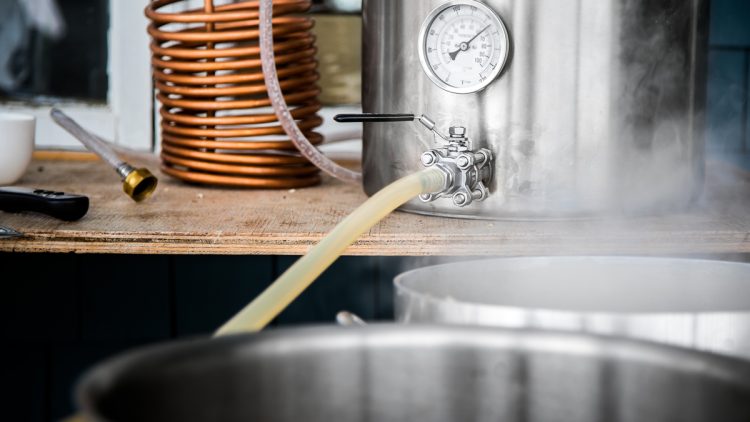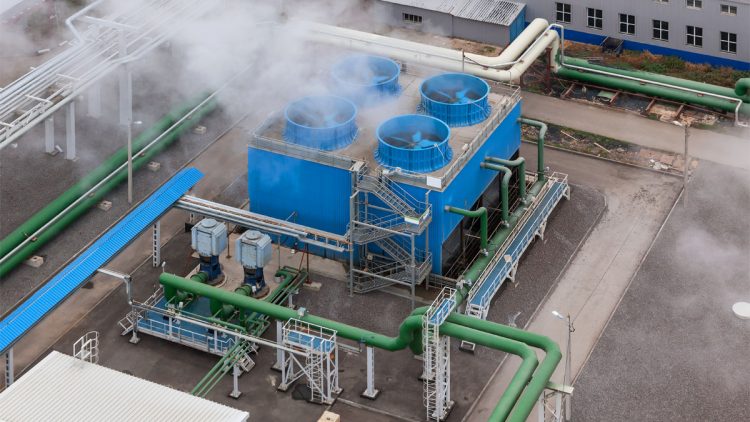Taking things for granted is part of human nature. We rarely consider the way everything works and stays working each day when we go about our routines. The ignition fires up our cars, the coffee pot brews up some motivation every morning and we rarely give the things that make our lives comfortable much thought until they aren’t working. This is no different than HVAC systems. A big part of the HVAC system is the chiller, and the tubes that make it work. Understanding chiller tube cleaning helps us keep our chillers working and our buildings cool during the warmer weather in Arizona.
To keep chillers and HVAC systems efficient they need to have regular maintenance and coatings. It is no small task to care for these critical components of the cooling system for large commercial spaces. Coatings help prevent buildup and cleanings kick out deposits that reduce thermal transfer.
Large commercial spaces use a lot of energy and the chiller can be one of the largest consumer of energy. As the price of energy increases, the savings of regular cleaning and chiller coatings increases. Keeping daily logs, making preventative maintenance a priority, and scheduling regular chiller maintenance will keep your overhead costs down.
Key Chiller Tube Cleaning Considerations
Tube Cleaning
The efficiency of the chiller tubes is completely dependent upon heat transfer. Thermal efficiency is limited by buildup on the inside of the chiller tubes. Most large chillers are comprised of literally miles of tubing which helps achieve the heat transfer in the evaporator and condenser. Keeping the tubing clean therefore is the way these critical HVAC components do their job and use less energy. The best way to keep tubes clean is to have planned outages for cleaning, keeping up with water treatment, and having chiller tube coatings which help control buildup.
The efficiency of chillers drop steeply as buildup develops inside the chiller. It is deposited by contaminants in your water that is recycling through your system and by contaminants being brought in from the air cycling through your cooling tower. The contaminants found in your chiller can range from algae, mud, sand and even minerals that develop into scales that all sap the heat transfer.
The percentages of decreased thermal transfer drop quickly even with what seems like thin layers of contaminants. Even a coating as thin as .0045 can drop chiller tube efficiency by as much as 44%.
Water Treatments
Water used in cooling towers and chillers usually comes from local water supplies. This means there can be additives, sand, minerals, and other elements that cause fouling and deposits in chiller tubes. Even the atmospheric conditions around the cooling tower have a significant effect on the quality and contents of the water used in HVAC systems.
This means that there needs to be water treatment in the system to help fight biological growth, scaling, and other deposits. The most contaminated the water the greater need for water treatment and a more frequent and robust water treatment plan.
Chiller Motors & Electrical Components
The chiller motor in your HVAC system is potentially the greatest user of electricity in your entire building. We might obsess about shutting off lights in our homes and offices, but the chiller is responsible for using an enormous amount of electricity to keep our commercial properties cool and comfortable.
Chiller motor maintenance is a critical part of keeping your system efficient and your energy bills as low as possible. The shaft seals, and air vents should be checked and kept clean. All of the insulation, wiring, and connections should be maintained to keep the system running properly and avoid unscheduled downtime.
Methods Of Tube Cleaning
For the best thermal performance it is clear that regular cleaning and maintenance of the chiller tubes is not optional. It is mission critical and should be carried out on a regular schedule by properly trained and equipped chiller maintenance technicians. There are different methods that these technicians use to get your tubes clean and maintain the thermal efficiency of your chillers.
Chemical Cleaning
One of the older methods of tube cleaning, is has seen a decrease in use in the last decade. Acid solutions are used in chemical cleaning that soften and break down the scale and deposits in the tubes. The acidic solutions are circulated through the tube bundles and help remove the layers of energy robbing debris.
Chemical cleaning does have the advantages of breaking down mineral scale so brushes can effectively remove them, and it can take tubes back to bare metal. It has lost some of its former popularity because it is time consuming, the chemicals are costly, requires increased training, and the chemicals are dangerous and difficult to dispose of.
Rod & Brush Cleaning
The rod & brush method is very similar to the cleaning of a gun barrel. It is probably the oldest type of chiller cleaning. A rod of metal is tipped with a wire or nylon brush that is larger than the tube. The process generally involves flushing the tubes with water, and then forcing the rod and brush through the tubes. After the rod has been pushed through water is sprayed again to remove any debris.
This is a popular method because it is inexpensive, but it does have some disadvantages. It is labor and time intensive. The chiller might be in an area that prevents the longer rods being used. Smaller sections might have to be assembled as the brush is inserted into the tube, adding to the time of the job. Also the bristles on the brush tend to fold down and end up swabbing instead of brushing. Another limitation of this process can be if the tubes brushed first dry and the debris reattaches before the final rinse is completed.
Rotary Tube Cleaners
Using either an air or electric motor these chiller tube cleaning machines include a cleaning tool that uses water and circular motion to help remove debris. A flexible shaft is set inside a plastic casing which directs water directly to the cleaning head. The tools used with these machines include scrapers, hones, brushes, and buffing tools. This combination of tools is what makes the rotary tube cleaners some of the best at removing deposits, including hard scale. The job is done by one operator feeding the shaft through each of the tubes. Best of all it only takes one pass for each tube.
This is one of the most used, and popular chiller tube cleaning types. It is due to the fact that is it one of the most effective cleaning methods paired with the low cost. The process takes little time and uses less consumables that other cleaning methods. It also only requires one technician, only opening one side of the chiller, and is the best type of cleaning for internally enhanced chiller tubes.
Tube Cleaning Guns
As the name suggests this method of tube cleaning features a gun that uses air or water to shoot a projectile through the tubes. These projectiles vary from metal or plastic scrapes to brushes and even rubber bullets.
This is a popular type of cleaning for light deposits and is very fast. With the right conditions tubes can be cleaned quickly, even in a matter of seconds per tube. It does have the limitation when it comes to the type of deposits it can remove. Harder scaling or stubborn deposits are more difficult or impossible to remove with this method. It also requires the opening of the chiller on both ends to allow the transfer of air as the projectile goes through the tube.
The equipment can be costly to buy and maintain along with some units being somewhat dangerous to operate. The pressure released into the tube might not make it through and be rejected at the operator when the gun is removed. Some units include pressure relief valves that prevent this danger to operators.
On Line Cleaning Systems
Cleaning systems are available for use while the system is active. This means that they help reduce the frequency of downtime. There are two on line tube cleaning types available today. One uses foam balls that circulate through the tubes in the chiller and the other includes the use of plastic brushes that are installed into each of the tubes. The idea behind the foam balls is that they should work through each and every tube in the bundle often enough that they will clean the tubes from becoming dirty. The plastic brush system features plastic baskets which are permanently attached to both sides of the chiller. Periodically the direction of the flow of water is reversed to cause the baskets and brushes to travel the length of each tube, removing debris.
With proper water treatment these systems can reduce or even eliminate the needs for tube cleaning. However these systems are costly to purchase and install. They also are not suitable for chillers that use hard water that promotes hard scaling.
Internally Enhanced Tubes
The only cleaning method for this type of chiller tube is rotary tube cleaning. These chiller tubes are making advancements with thermal efficiency and are becoming more and more common. Internally enhanced chiller tubes are those that include rifling on the inside. Rifling is when spiral groves run the length of a tube. They cause the water to circulate more evenly and provide increased surface area. Both of these elements increase the chiller’s thermal efficiency.
The rifling does mean there are areas that are below the surface of the metal. This means that many cleaning methods are simply not suited for getting into these crevices that increase efficiency. The best type of rotary tube cleaners to use in these applications are bi-directional units. This means that on the way in, and the way out, the brushes can be moving in the same direction as the spiral inside the tube. Specialized heads have also been developed to get into these grooves.
Chiller Maintenance in Arizona
If you have a chiller in or near the Phoenix valley All Kote Inc. can help you extend the life of your chiller and your cooling towers. Regular maintenance and repair keeps the system energy efficient and can save users huge amounts of energy and that means real savings on electricity bills. If you have a commercial space that uses and chiller or cooling tower make sure that you have a plan for maintenance and have All Kote help you with your chiller and cooling tower needs.





 [/one-half]
[/one-half]